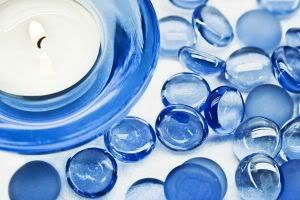
New study from the University of South Hampton: Candles with Essential Oils Kill Bacteria
Researchers Dr Lindsey Gaunt and Sabrina Higgins from the University of Southampton have found that adding essential oils, such as eucalyptus, orange, litsea and thyme to candles can destroy bacteria, such as Escherichia coli (E. coli) and Staphylococcus aureus (staph) on surfaces. The findings that adding essential oils to candles could be as effective as scrubbing with disinfectants were unveiled at the sixth joint symposium of the International Electrostatics Society of Japan and the Electrostatics Society of America conference in Tokyo (Nov 7-10, 2004).
The scientists used essential oils of orange, palmarosa, may chang, thyme, and an element of tea tree oil called beta-pinene, which when dispersed into the air and combined with the ions produced in the candle flame, all have a powerful bactericidal effect.
This unique combination of essential oils and electrical ions has demonstrated a remarkably powerful bactericidal action, with up to nearly 100 per cent bacteria kill.
For comparison, the researchers also tested plain wax candles without essential oils and evaporated essential oils in water on a hot plate. In contrast with the essential oil containing candles, the plain wax candle had no effect on bacteria, and vapor created by the essential oil alone also had little to no impact on the surface bacteria.
The candle flame and essential oil components appear to work together for a sterilizing effect, say the researchers. The researchers believe that the oils react with ions in the wick and with oxygen to take on anti-bacterial properties.
They said adding these essential oils to candles could help people to easily and conveniently kill bacteria lurking in their homes.
Note: This story has been adapted from a news release issued by the University of South Hampton for journalists and other members of the public. If you wish to see the news releases see The University of South Hampton as the original source.










